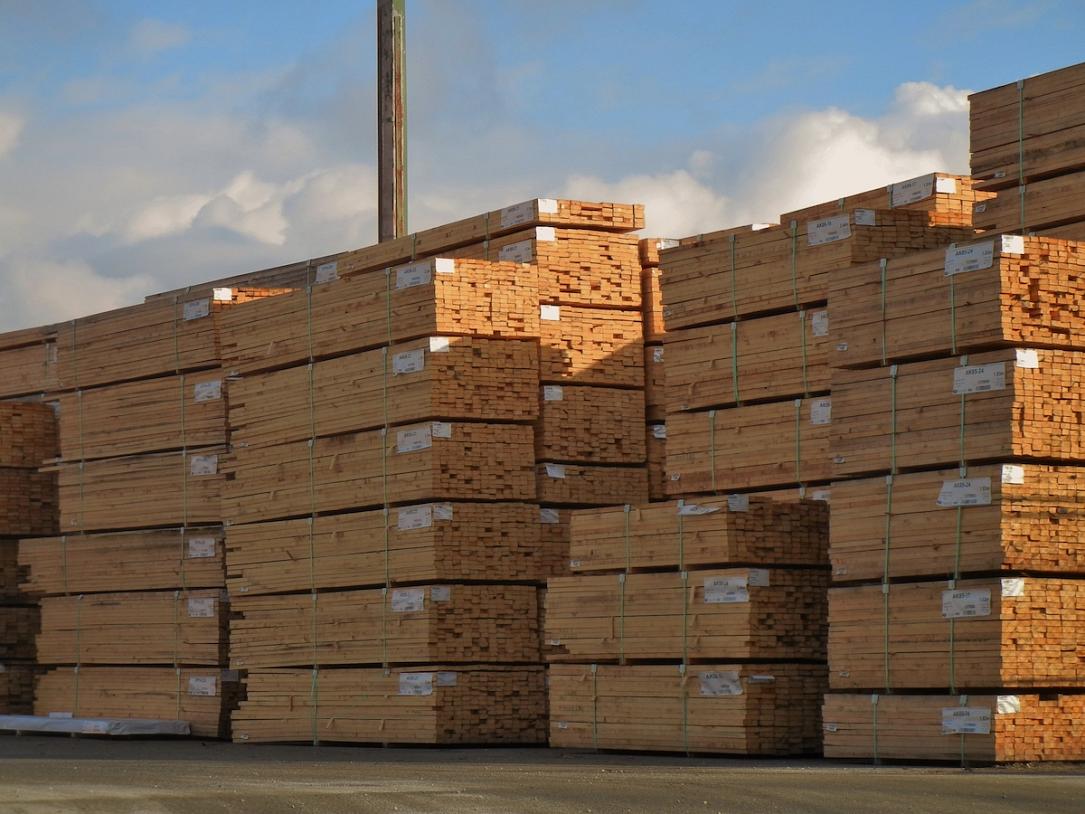


It’s been a frustrating time for different reasons, and we have yet to get back to a fully staffed production rate.
BIGGEST LUMBER EXPORTER FULL
“The demand has been excellent for our product, but we’ve struggled to keep a full workforce. “We have let down a fair amount of our customers not having been able to supply what their needs have been, the same has been true for the supplies we need,” Scott said. Maine Woods Company has been around for more than 20 years, supplying lumber to the entire world while creating jobs for the small community it resides in.īut just like every business in the world, Scott said the supply chain issues over the past couple of years have made production more challenging. The lumber industry is growing at an annualized rate of 6.9 percent and generating more than 135 billion dollars over the last five years.īut the price and demand for lumber significantly increased when the pandemic started. The country contributes about 8.4 percent of the world’s total exports of wood products with the primary one being lumber. contributes 18 percent of the world’s timber production.Īs far as the largest wood product exporters, the top three are China, Canada, and the U.S. The logging industry in Maine makes up about 7.8 billion dollars of the U.S.’s economy, according to a study done by the University of Maine.Īs for the global wood industry, information from IBISWorld reported the leading timber-producing countries are China, the United States, and Japan. Near Portage Lake, Maine you’ll find many different sawmills producing high-quality Maine-grown lumber.Īnd lumber is one of the things Maine does best. Wholesale prices for plywood increased from $400 to $1500 per thousand square sheets, according to NASDAQ information. During the first year of the COVID-19 pandemic, processed wood prices nearly quadrupled. Within the last couple of years, the price of processed wood products increased significantly. Many companies have been affected, from sawmills to contractors, to small woodworkers and even consumers. In addition, international markets will need to adjust to the reduced supply of European softwood log and lumber exports.The wood industry has seen a lot of challenges in the last few years during the pandemic, which has caused a lot of price shifts. The reduced timber supply in Central Europe and Russia’s invasion of Ukraine will impact European industry production, trade flows, and forest products prices for many years to come.Īccording to the report, sawmills will need to renew focus on conversion yield and small-diameter sawing capabilities, fiber industries should consider alternative species and wood fiber sources, and forest owners would benefit from more intensive forest management. Central European lumber production will decline from current record levels, and the region may shift from being a net log exporter to becoming a net importer again.įurthermore, Russia’s invasion of Ukraine has resulted in sanctions in the importation of practically all forest products from Russia and Belarus to Europe, which included almost 14 million m3 of logs and nine million m3 of softwood lumber in 2021. With the timber harvests having peaked, exporters and consumers of logs will need to adjust to a reduced supply of softwood logs in the coming years. Impact forest product trade flows for years to come The surge in wood supply has been absorbed by domestic sawmills (~60 percent) and increased export of sawlogs and pulpwood (~40 percent).Īdditional wood supply at competitive prices has helped the Central European sawmill industry expand, taking advantage of strong lumber markets in Europe and globally in 2020-21.Īlso, increased sawdust and woodchip supplies from sawmills have enabled wood pellets and panels production growth. It also covers implications for forest industries in the region and the likely impact on global softwood log and lumber markets. The new Focus Report, Central Europe Softwood Supply – Constrained industry growth post-bark beetle outlook provides oversights on how Central European timber supply will evolve through 2030. The volume of damaged wood is expected to fall at 10-20 percent per year, reverting to close to long-term average levels by 2025. The amount of timber damaged by bark beetle peaked in 2019, falling by 5 percent in 2020 and 24 percent in 2021. As a result, from 2017 to 2021, annual roundwood removals were up 15 percent and at an unsustainable level. The infestation in the Czech Republic and Germany has resulted in record-high timber harvests over the past few years.


 0 kommentar(er)
0 kommentar(er)
